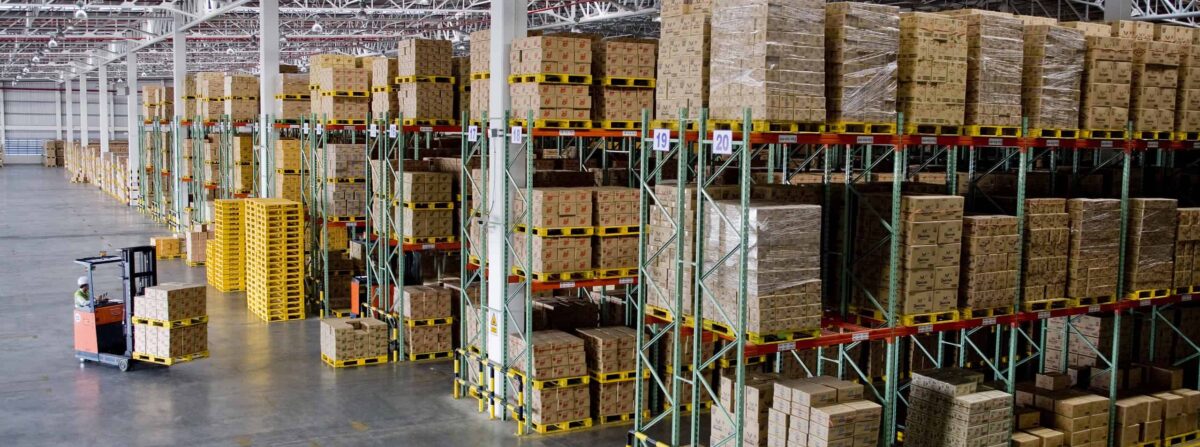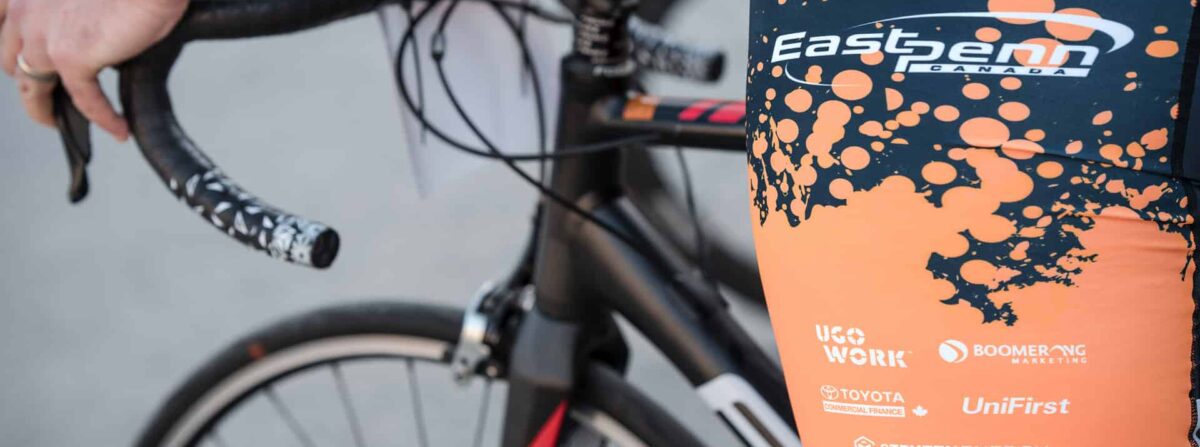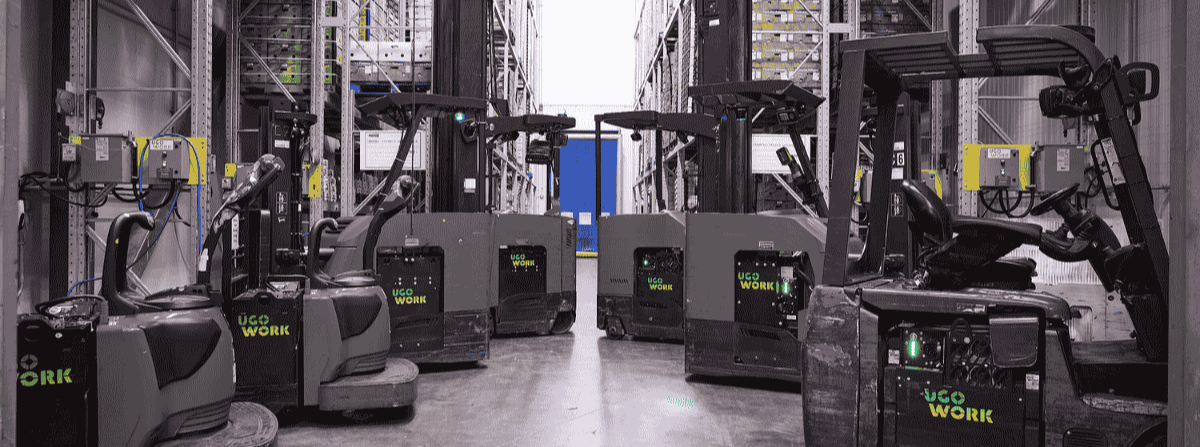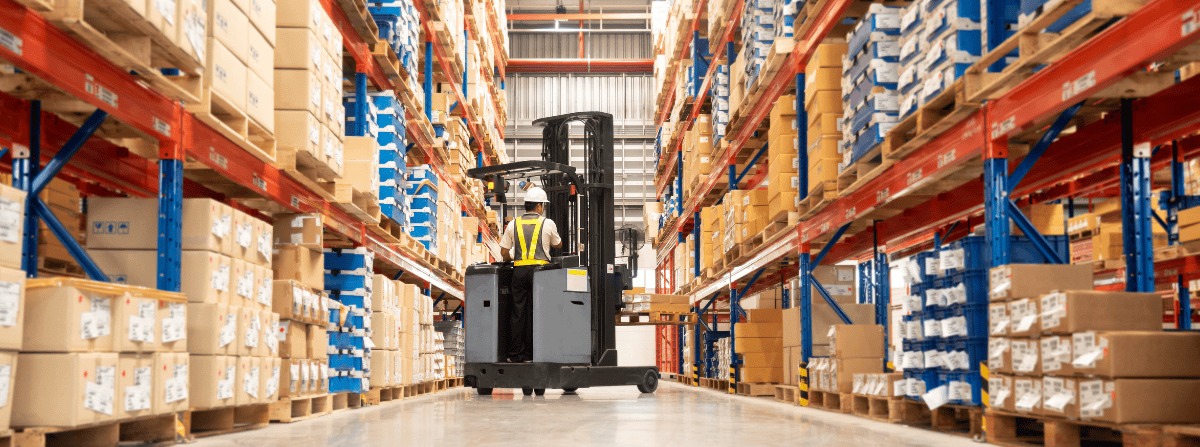Is your forklift power solution holding you back?
Today’s material handling teams are under increasing pressure to meet ambitious KPIs—cost per unit, throughput, and cycle times are just the start. Equipment uptime, space utilization, and energy efficiency also weigh heavily on material handling teams as they strive for higher performance and reduced costs.
Yet, many are stuck using legacy forklift power solutions that struggle to keep up. Whether it’s outdated internal combustion engine (ICE) forklifts, traditional lead-acid batteries, or even older lithium-ion models, these systems can create barriers that hinder productivity and profitability. If you’re feeling the strain, it may be time to rethink your approach.
Internal combustion forklifts: Power with a high price
For years, internal combustion forklifts have been a staple for heavy-duty material handling operations. However, their reliance on diesel, natural gas, or propane is increasingly problematic.
Refueling interrupts employees’ work, fuel price fluctuations strain budgets, and frequent engine maintenance eats into a material handling team’s efficiency.
In addition, internal combustion forklifts produce exhaust fumes that make them unsafe for indoor use, posing health risks to workers and requiring more safety precautions. These fuels contribute to significant greenhouse gas emissions, making them less viable as companies face looming ESG regulations. Compliance measures and specialized refueling setups, including investments in ventilation systems, emissions controls and additional PPE, only add to the complexity and costs.
Lead-acid batteries: Why it’s time to move on
Lead-acid batteries have also long been a mainstay in material handling. Nevertheless, more and more material handling teams are realizing their inherent high total cost of ownership (TCO). Let’s look into the issues with lead-acid batteries in more detail.
Typically, in a 24/7 material handling environment, forklifts that are powered by lead-acid batteries require 3 units: 1 that is propelling the equipment, 1 that is charging and 1 that is cooling down before being used. If the “working” battery experiences an issue, that specific forklift’s operator will have to wait until the other battery is cool enough to be used. That alone can impact a material handling team’s throughput. Now, imagine that scenario scaled across an entire operation—multiple forklifts delayed, productivity stalled, and efficiency compromised.
In addition, for any battery-operated forklift, it’s important to keep in mind that when it operates, energy from the grid flows through chargers, is stored in the power source, and then released to enable movements like moving around a warehouse and lifting. The roundtrip efficiency from grid to truck is 58%, 42% being lost, mostly in heat dissipation. Furthermore, lead-acid battery performance decreases as its state of charge lowers. It also takes several hours to charge. All of this contributes to higher demand from the grid—and significantly higher energy costs for a company year after year. In fact, some businesses have to shell out additional money to resize their building’s electrical infrastructure if electricity requirements are too high.

Lead-acid batteries do not provide ideal performance in extreme temperatures, such as in cold storage or other rugged environments. Their state of charge drops abruptly, leading to reduced power output and potential shutdowns.
Finally, lead-acid batteries are prone to degradation, especially if they are overused or if they are not maintained as per strict protocols. This can lead to premature wear, reducing their lifespan to just a few years (2-3) and forcing businesses to replace them more frequently. The unpredictable lifecycle costs of lead-acid batteries make it difficult for businesses to budget effectively, leading to financial strain as unplanned replacements and repairs occur.
Here are other disadvantages of lead-acid batteries for forklifts:
- Lead-acid battery charging infrastructure takes up valuable warehouse space with dedicated rooms that could be used for more value-added operations
- Material handling teams are required to stock multiple chargers for different battery voltages or forklift models
- Increased maintenance and labor costs due to watering and equalization
- Lead-acid batteries pose risks for hazardous spills and toxic fumes; bulky and heavy, they also can cause injuries to workers, which inevitably means higher compensation claims and insurance premiums
- Sustainability concerns: Compounding the energy loss during charging, water use and short lifespans, lead-acid batteries have very limited revalorization
Why lithium-ion is the future of forklift power
The shift to lithium-ion batteries is transforming material handling by delivering unmatched speed, efficiency, and reliability. With a lifespan of up to five times longer than lead-acid alternatives, lithium-ion batteries are designed to handle demanding material handling operations without degradation. They can withstand deep discharges and support opportunity charging, maintaining peak performance over thousands of cycles, eliminating the need for frequent replacements and drastically reducing energy costs.
Lithium-ion batteries also charge up to five times faster, enabling forklifts to operate continuously with just short charging breaks. This rapid recharging slashes downtime and maximizes throughput, keeping operations on track.
Lithium-ion systems virtually eliminate maintenance. Unlike lead-acid batteries, they require no water level monitoring or acid spill management. This reduces labor costs, streamlines operations, and ensures a safer working environment.
Lithium-ion systems free up valuable floor space. Their fast-charging design eliminates the need for large battery rooms, allowing companies to reclaim this space for storage, production, or other revenue-generating activities.
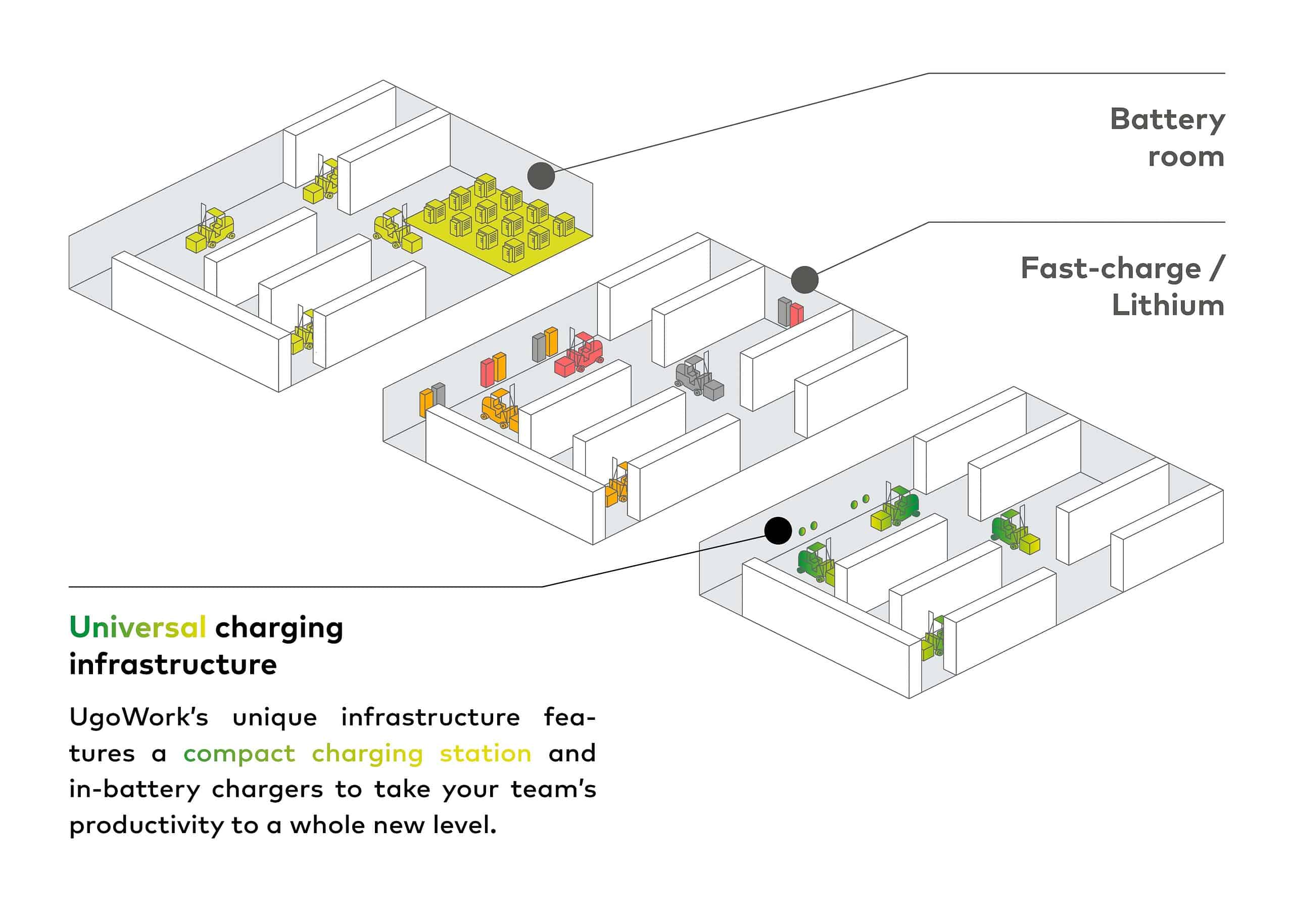
Why not all lithium-ion batteries are created equal
Lithium-ion technology has undeniable advantages, but not all solutions meet the same performance standards. Some batteries falter in extreme temperatures, compromising uptime, performance and reliability in harsh environments. Others lack essential certifications like UL listings or OEM approvals, leading to safety concerns, equipment compatibility issues, and compliance risks.
Adding to the challenge, some vendors provide limited after-sales support, leaving businesses to troubleshoot issues on their own. These gaps can turn even a promising lithium-ion upgrade into a frustrating experience—and increased TCO.
There have been many misconceptions about the price of lithium-ion batteries as well. Material handling teams wanting to make the switch to lithium-ion are concerned about the price tag. But again, it all comes down to TCO and productivity gains. Lithium-ion batteries require less electricity and maintenance. They cause minimal-to-no downtimes that affect operations continuity. While a lead-acid battery with an 8-8-8 charging pattern can last around 2 to 3 years, a high-performance, effectively used lithium-ion battery can last well into 8 years and beyond.
Still, some material handling managers are worried about lithium-ion safety and associated fire hazards. However, a new generation of UL-listed lithium-ion batteries is thoroughly and meticulously tested by independent labs for mechanical, electrical and fire safety. Forward-thinking battery vendors also carry out extensive design and quality control processes to minimize all fire risks. In sum, advancements in battery technologies mean lithium-ion is safe and reliable for material handling.
UgoWork: Redefining lithium-ion performance
Switching to a better forklift power solution requires careful consideration of several factors. Here is where UgoWork sets itself apart with its approach to lithium-ion batteries.
UgoWork takes lithium-ion technology to the next level with UL-listed, OEM-approved batteries designed for a wide range of material handling applications. Available in 24V, 36V, and 48V configurations, UgoWork batteries feature a universal design that adapts to various forklift sizes and weights. This flexibility ensures hassle-free fleet upgrades and battery swaps without the need to spend extra dollars on batteries just to fit different material handling trucks.
Built to thrive in demanding conditions, UgoWork batteries incorporate advanced thermal management features, ensuring consistent performance in extreme environments, from scorching heat to freezing cold.
The compact, high-speed, multi-voltage charging infrastructure further simplifies operations, enabling ultra-fast recharging while streamlining workflows because they take up very little space. The onboard chargers allow operators to recharge at virtually any UgoWork charging station in the warehouse, regardless of the battery voltage.
User-friendly by design, UgoWork batteries feature an ergonomic interface that displays charge levels and alerts operators to potential issues, making it easy to intervene before any unexpected downtimes.
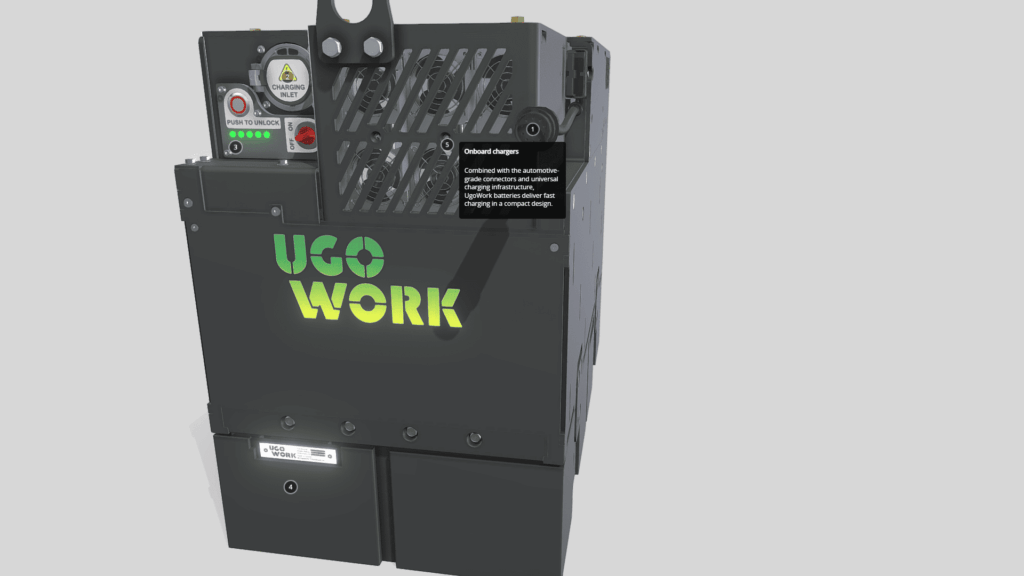
UgoWork also offers over-the-air (OTA) updates for its battery systems, a groundbreaking feature that allows remote firmware upgrades without disrupting operations. This ensures fleets always benefit from the latest performance enhancements and optimizations.

An early adopter of UgoWork solutions, operating one of the largest 3PL operations in Canada, shared: “UgoPilot’s analysis of raw data provides insight that translates into action. Its prioritized features, such as real-time fleet status, instant notifications, and personalized reporting have revolutionized our operations. UgoWork’s Energy Experts provide unparalleled support, helping us reach our fleet reduction and productivity goals.”
To learn more about how this could change the game in your operations, request a complimentary energy assessment.

Even when batteries reach the end of their lifecycle, UgoWork provides sustainable solutions. Battery enclosures can accommodate multiple battery packs, maximizing recycling potential for critical materials like nickel, manganese, and cobalt. Through a partnership with Lithion Technologies, components are responsibly recycled or repurposed, saving material handling teams the burden of properly disposing of the batteries themselves.
Cloud-connected batteries and energy platform
UgoWork’s innovative approach goes beyond simple batteries. Their batteries are connected and feed real-time data to a proprietary cloud infrastructure. That live information is analyzed in real-time so that UgoWork’s service team members are notified and can provide accurate diagnostics and instructions to field technicians or remotely interact with the battery. This approach ensures that interventions are short and resolved on the first try, which inevitably reduces downtime for customers. The same data is put to profit through UgoPilot™, an industry-first energy and battery management platform that provides push notifications to managers regarding the forklifts’ critical operations.
UgoWork’s Customer Success team complements this technology with hands-on counsel, proactively analyzing data and turning it into useful insights, right in the UgoPilot™ platform. Services include fleet rightsizing, grid peak shaving, CO2 credit management, and compliance assistance, making UgoWork a true partner in powering smarter material handling operations.
Flexible payment options
UgoWork’s Energy as a Service (EaaS) is a pay-per-use model. It eliminates the need for large capital investments in forklift batteries. Instead, businesses pay a predictable monthly fee based on energy usage. This flexible OPEX approach includes battery upgrades, round-the-clock monitoring, comprehensive customer support, and end-to-end management of battery revalorization and recycling.
For companies with more traditional budgeting frameworks, UgoWork provides CAPEX financing options.
When upgrading from internal combustion or lead-acid systems or evaluating your current lithium-ion provider, UgoWork delivers a complete, future-proof solution. Combining innovative technology, expert support, and flexible pricing, UgoWork truly helps companies achieve more with smarter, more efficient forklift power. Contact UgoWork today for an assessment of how our pragmatic lithium-ion batteries can positively impact your bottom line.

